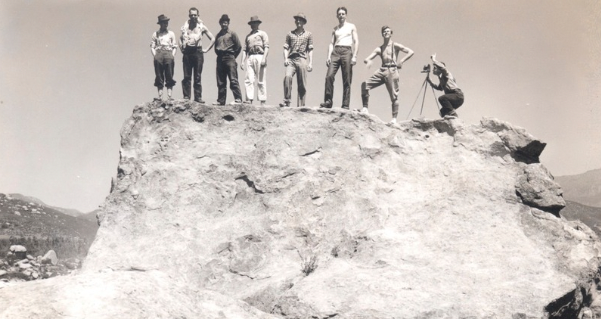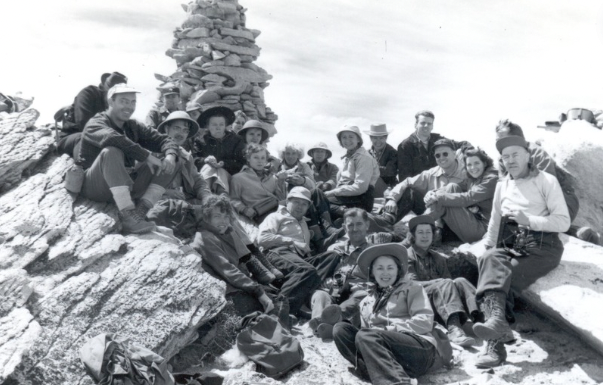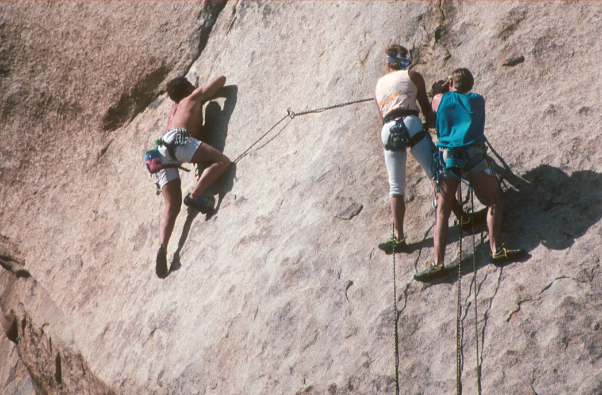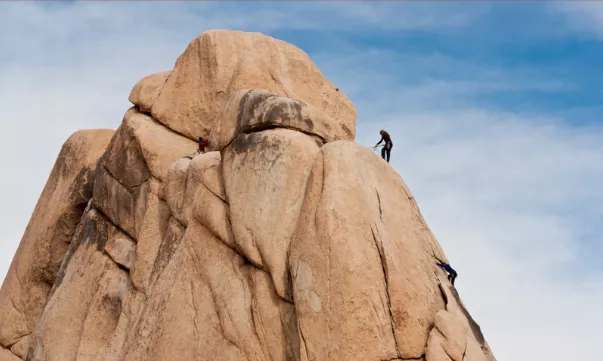On April 25, 1936, Arthur B. Johnson, Chair of the Rock Climbing Committee of the Southern California Sierra Club Chapter led what was likely the first ever climbing-focused expedition in the Wonderland Rocks area of Joshua Tree, before it was even designated as a national monument on August 10th of the same year. In the 1930s, the Sierra Club was the preeminent climbing organization in Southern California, and helped to bring European Alpinist techniques to the California landscape.

Photo by Glen Dawson
From the beginning of its organized trips, the ethos of “leave no trace” guided climbers who came to Joshua Tree with Sierra Club.
The Southern California Sierra Club Chapter newsletter, The Muglenoos, regularly covered the best climbs and necessary training for climbing in Joshua Tree. Its authors published detailed evaluations of different climbing routes, as well as schedules of organized excursions to Joshua Tree from major metropolitan areas like Los Angeles and San Diego.
In the postwar period, climbing in Joshua Tree continued to grow While the Sierra Club was fastidious in its training requirements and basis in European mountaineering techniques, other groups of climbers also began to frequent the park, expanding the types of people enjoying recreational climbing and contributing a more radical, often comedic perspective to its culture. One notable group in this vein was the Desert Rats Uninhibited, who formed in 1962.

Photo by Niles Werner
In the 1970s and 1980s, new groups of rock climbers, such as “The Stonemasters,” who formed in 1972, popularized “free climbing” in Joshua Tree. Free climbing, cross training, and new climbing technology replaced European mountaineering.
In the 1990s, Joshua Tree was a destination for thousands of climbers per year, and boasted more than 4,500 different routes. The emergence of sport climbing and professional climbing guide companies again reshaped the culture of rock climbing in Joshua Tree.
Joshua Tree became a National Park in 1994, as a part of the California Desert Protection Act. It remains a popular destination for climbers seeking world-class routes and nature lovers of all kinds.

Photo by National Parks Service
Source: Ness, Sally Ann Allen. A History of Recreational Rock Climbing At Joshua Tree National Park: HISTORIC RESOURCE STUDY. National Park Service Joshua Tree National Park. March 8, 2024.
